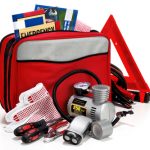
The Mystery of Car Check Engine Lights: Decoded!
Have you ever been cruising down the road when, suddenly, the dreaded check engine light flickers on? It’s a moment that can send a wave of uncertainty through even the most experienced drivers. What does it mean? Is it something serious, or can it wait? In this guide, we’ll unravel the mystery behind check engine lights and explore how car diagnostics can help decode car trouble codes, giving you a clearer understanding of your vehicle’s health.
What Is a Check Engine Light?
The check engine light is part of your vehicle’s onboard diagnostics system (OBD). Modern vehicles come equipped with complex computer systems designed to monitor engine performance and emissions. When something goes wrong with your engine or emissions system, the OBD system triggers the check engine light to alert you. But what exactly is it trying to tell you?
A check engine light can indicate a variety of issues ranging from something minor like a loose gas cap to more serious problems like engine misfires. Understanding what your vehicle is trying to communicate through the check engine light is crucial for ensuring your car remains in top shape.
Common Reasons the Check Engine Light Turns On
Loose Gas Cap
One of the most common and least expensive issues that trigger a check engine light is a loose or missing gas cap. Your vehicle’s fuel system is pressurized, and if the gas cap isn’t secured properly, it can cause a pressure imbalance that leads to the check engine light coming on. Fortunately, this is an easy fix—tightening or replacing the gas cap often resolves the issue.
Faulty Oxygen Sensor
Another frequent culprit behind a check engine light is a faulty oxygen sensor. This sensor measures the amount of unburnt oxygen in the vehicle’s exhaust and plays a key role in optimizing fuel efficiency. A malfunctioning oxygen sensor can cause the engine to run inefficiently, resulting in reduced fuel economy and higher emissions.
Catalytic Converter Issues
The catalytic converter is responsible for reducing harmful emissions by converting them into less harmful gases. If your check engine light is on, it could be signaling a problem with this crucial part. A failing catalytic converter can lead to poor engine performance and even prevent your vehicle from passing an emissions test.
Spark Plug or Ignition Coil Problems
Spark plugs and ignition coils are critical components for the internal combustion process. When these parts are faulty, the check engine light may come on due to engine misfires. Misfires can affect engine power and lead to long-term damage if not addressed quickly.
Decoding Car Trouble Codes with Car Diagnostics
When the check engine light appears, the best way to understand what’s going on under the hood is by using car diagnostics. Mechanics and experienced DIY enthusiasts rely on diagnostic scanners to read car trouble codes. These codes are generated by the OBD system and help pinpoint specific problems.
How Car Diagnostics Work
Car diagnostics involve connecting a diagnostic scanner to your vehicle’s OBD port. This port is typically located under the dashboard near the driver’s seat. Once connected, the scanner communicates with your car’s onboard computer to retrieve the trouble codes stored in the system. These codes provide insight into the issue that triggered the check engine light.
Understanding Car Trouble Codes
Car trouble codes come in two main categories: generic codes and manufacturer-specific codes. Generic codes apply to all vehicle makes and models, while manufacturer-specific codes are unique to certain car brands.
Each trouble code is made up of a combination of letters and numbers. For example, a common code like P0420 indicates an issue with the catalytic converter. The letter “P” stands for Powertrain, while the numbers provide more detailed information about the specific issue.
While it’s possible to look up car trouble codes online, a professional mechanic has the experience and tools needed to interpret the codes accurately and recommend the right repairs.
What Should You Do When Your Check Engine Light Comes On?
It’s important not to ignore the check engine light when it turns on, but it’s also critical to know when immediate action is required. Here are some steps to take when faced with that glowing dashboard icon:
1. Check for Immediate Signs of Trouble
Is your car making strange noises, shaking, or driving differently? If so, you should pull over and have your car inspected right away. Serious issues like engine overheating or transmission failure could be imminent, and driving further may cause significant damage.
2. Tighten the Gas Cap
As mentioned earlier, a loose gas cap is a common cause of the check engine light. Before heading to a mechanic, check that the gas cap is properly secured. If the light doesn’t go off after tightening it, this may not be the issue, and further diagnostics will be needed.
3. Use a Diagnostic Tool
If you have access to a car diagnostics tool, use it to check the trouble codes. This can give you an immediate idea of what might be wrong with your vehicle. If you don’t have a tool, many auto parts stores offer free diagnostic services to help identify the issue.
4. Visit a Mechanic
If the check engine light remains on after you’ve checked the gas cap and used a diagnostic tool, it’s time to visit a professional mechanic. Even if the car seems to be running fine, ignoring the light could lead to more costly repairs down the line.
Why Car Diagnostics Are Important
Using car diagnostics to decode trouble codes is vital for maintaining the health of your vehicle. Here’s why:
Prevents Further Damage
Car trouble codes provide valuable insights into what’s wrong with your vehicle. Ignoring these warnings can result in more extensive damage, leading to higher repair costs. By addressing the issue early on, you can prevent further harm to your engine or other vital components.
Saves Time and Money
Rather than guessing what might be wrong, car diagnostics offer a clear direction on what needs fixing. This can save you time by eliminating unnecessary repairs and parts replacements. Additionally, identifying issues early can save you from expensive breakdowns or emergency repairs.
Improves Vehicle Performance
A malfunctioning sensor or component may not cause immediate problems, but over time, it can lead to poor fuel efficiency, reduced engine performance, and higher emissions. Fixing issues promptly with the help of car diagnostics keeps your car running smoothly and efficiently.
The Future of Car Diagnostics
With advancements in automotive technology, car diagnostics are becoming more sophisticated. Some newer vehicles can even send real-time trouble codes to your smartphone or alert you when maintenance is needed. As cars become more connected, staying on top of car trouble codes will be easier than ever, ensuring you always know what’s going on with your vehicle.
Don’t Ignore the Check Engine Light
The check engine light might seem like an intimidating mystery, but with car diagnostics and a better understanding of car trouble codes, you can take control of your vehicle’s maintenance. Whether it’s a loose gas cap or a more serious engine issue, responding promptly to the check engine light can save you time, money, and stress.
The next time your check engine light turns on, remember that it’s your car’s way of communicating with you. With the right tools and knowledge, you can decode the mystery and keep your vehicle running at its best.
Need a Mechanic in Lubbock, TX?
Since 1975, M & M Tire and Service Center has been the premier provider of general automotive repairs in the Lubbock area. We are a family-owned and operated business with over 40 years of experience. Our friendly and professional staff work to provide quality repairs and services at reasonable prices. At M & M Tire and Service Center, we offer oil changes, brake servicing, suspension repair, tires, electrical system analysis, heating and air conditioning, engine repairs, doors and windows and safety inspections. Call us today to schedule your next appointment and see why the Better Business Bureau has given us an A+ rating since 1983.
More...
Categorised in: Vehicle Maintenance
This post was written by admin





